Your complete guide to stair newel posts
Within this guide you will find information on the following:
- What is a newel post?
- What types and parts of newel posts are available?
- What styles of newel posts are available?
- What materials are available for newel posts?
- What are half newel posts?
- What fixings and accessories will I need for newel posts?
- What are newel caps?
- How can I fix a wobbly newel post?
- Newel post FAQs
What is a newel post?
A newel post is the upright post that sits at the top and/or bottom of the balustrade to support a staircase banister and secure the balustrade. Newel posts don’t just give a balustrade structure and strength, they also offer the perfect opportunity to add a decorative touch to your stairway.
Newel posts can vary in design—from traditional to contemporary—to reflect the style of the staircase and interior décor. They are available in a huge range of materials, with popular choices being oak, pine and hemlock.
What types and parts of newel posts are available?
Newel posts can be either a complete post or three separate elements:
- a newel base
- a newel post
- a cap
This breakdown of the separate elements will help you determine what parts you need to suit your particular staircase.
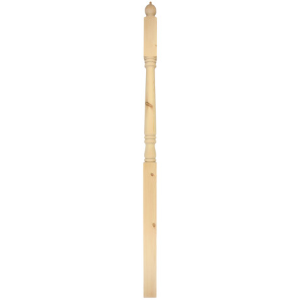
Complete newel post—These incorporate the newel base and newel post to make a complete unit. In some cases a newel cap is already attached.
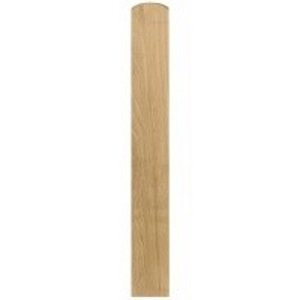
Newel base—The square part at the bottom of the newel post. It has a shaped top and a pre-drilled 50mm hole. The 50mm diameter peg on the newel post sits inside this hole. If you’re cutting down an existing newel post, don’t cut it too short as newel posts come in fixed lengths.
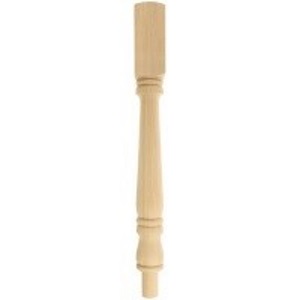
Pegged newel post—Generally the more decorative part of the post. The post has a 50mm diameter peg (also known as a dowel) on the bottom, and the post peg fits into a 50mm hole in the newel base.
A newel post is always a fixed length usually 750mm–850mm long (excluding the peg). The newel base makes up the remainder of the height of the newel post.
Pegged newel posts are ideal if you can’t easily remove the existing newel base from your staircase, but want to update the look of your newel.
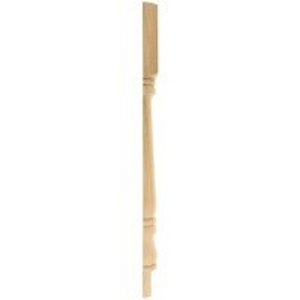
Newel post half—Used on landings where the end of the balustrade meets a wall, a half newel post is the ideal way to finish off the balustrade, adding extra strength and a smart finish. Half posts attach directly to the wall and sit flush against it. When changing newels on a staircase, it’s often easier to change the half newel completely.
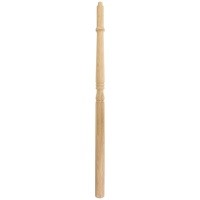
Volute newel posts—This type of newel post sits on the bullnose step at the foot of a staircase. It’s to be used in conjunction with a volute handrail fitting and 1100mm-long spindles.
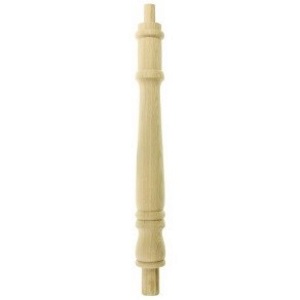
Continuous newel posts—This style of newel is used along with handrail fittings to create a continuous flowing handrail across the top of the newels post. Rather than having a square head at the top of the newel, it has a round peg which sits into a hole on the corresponding handrail fitting.
What styles of newel post are available?
As well as choosing the type of newel post you want, you’ll also have to make a decision on the style that’s right for your home.
There is a huge range of options available, from the more traditional turned newel posts to the contemporary square or square twist styles.
If you’re not sure which style is right for you, read our guide What styles of newel post are available?
What material options are available for newel posts?
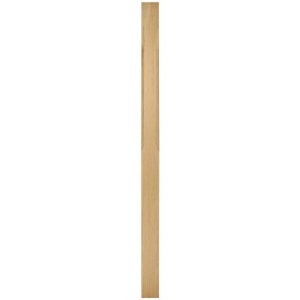
Newel posts are usually made of wood, with white primed, hemlock and pine and oak being the most popular materials.
Oak is a hardwood, which means it’s extremely tough and resistant to dents and scratches. Its distinctive tiger-stripe grain makes oak newel posts a great, eye-catching addition to traditional or modern homes.
View a White Oak Stop Chamfered Newel Post here. You can find out more about oak stair parts by reading our frequently asked questions here.

Hemlock is a softwood but it’s actually denser and stronger than many hardwoods. Its strength, combined with its uniform, knotless grain, makes it an excellent choice for a beautiful newel post. Hemlock newel posts tend to be less expensive than oak, but more expensive than pine.
View a Hemlock Stop Chamfered Newel Post here.
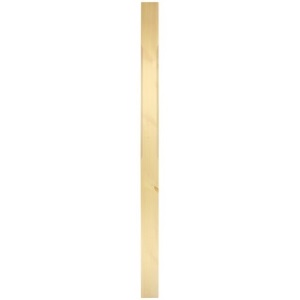
Pine newel posts are among the most affordable options for updating your newel. Pine is a softwood, which means it’s more susceptible to wear and tear. Pine newel posts do have some very strong benefits though—pine is quick-growing, so is one of the most sustainable woods available. It’s also very easy to paint, stain or varnish, so you can easily achieve the finished look you want.
View a Pine Stop Chamfered Newel Post here.
Other materials for newel posts include ash, dark hardwood & walnut. You can read more about the differences between these woods, and the pros and cons of each, on the following pages:
- Choosing the right material for your balustrade
- Hardwood vs softwood: which is best for your wooden stair parts?
What are half newel posts?
Half newel posts are used to attach a balustrade to a landing wall. They also provide an attractive finish to the balustrade and help to tie-in the overall look of the staircase.
You can find out more about what half newel posts are with our guide Half newel posts—what they are, what they’re made of and how to fit them.
What fixings and accessories will I need for newel posts?
Before you begin choosing a newel post, you’ll need to know whether you’re replacing the newel post completely or keeping the existing newel base and attaching a new newel post on top.
If you’re attaching a new newel post to an existing newel base, you’ll need to drill a new 50mm hole into the existing base before you can fit the peg to the newel post. You can do this with a 50mm drill bit or hole saw.
If you’re replacing the newel completely, you can do this either by using the zip bolt newel post fastener or by fixing below floor level.
It’s essential that you attach the newel post securely as it needs to endure a lot of wear and tear.
Below we look at the individual parts needed to make up a newel post.
What are newel caps?
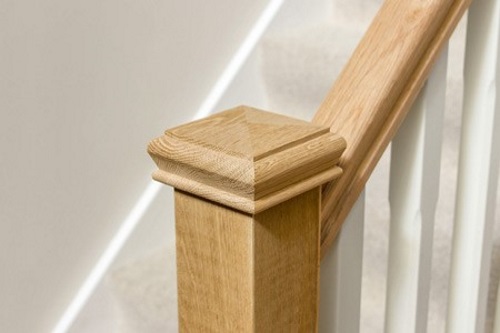
Newel caps are the small block of wood (or sometimes metal) that sits on top of a newel post. They provide a finishing touch to the newel post and offer extra support to people using the staircase.
Newel caps are an integral part of a newel post and you can find out more about how to choose the best one for your staircase with our guide Newel caps—what they are, what styles are available and how to fit them.
If you already have a newel cap that needs fitting, read our guide How to replace newel caps.
How can I fix a wobbly newel post?
Wobbly newel posts can be annoying and dangerous. If your newel post becomes loose, you should be able to fix it yourself with these top tips from a staircase fitting expert.
If you’re not an experienced DIY-er, always ask an expert to help!
Newel post FAQs
When would I use a double block newel post?
A double block newel post is used where there is a quarter landing on a stair case. It has two square heads.
The handrail coming up the stairs goes into the bottom block. As you turn through the quarter landing, the handrail going up the next flight comes out of the top block.
When would I use a winder newel post?
A winder newel post is a shorter-length newel post, used when the staircase has a kite winder. The handrail coming up the stairs will hit into the square newel base. As you go round the kite on the stairs, you’re changing heights, so the handrail going up after the kite will come out of the square block on the winder newel post.
You should use a long newel base with a winder newel post.
What is the size of the peg on the newel post?
The peg on a newel post is 50mm in diameter.
Does your newel post measurement include the length of the peg?
No, as the peg on a newel post sits in the hole in a newel base.
What building regulations affect newel posts?
When you buy and fit new stair parts, you need to be aware of the building regulations related to stairs and ensure you comply with these.
Building regulations stipulate that a domestic property can have a handrail height of 900mm for both stairs and landings. Commercial properties should be a minimum of 900mm on stairs and 1100mm on landings.
When fitting your newel posts, you need to ensure there is sufficient room for the handrail to be fixed into the newel post at the correct height.
What else are newels used for?
Newels are also used as supporting pillars to provide structural support to spiral staircases. When used in this context, newels are also known as a central pole or a support column.





